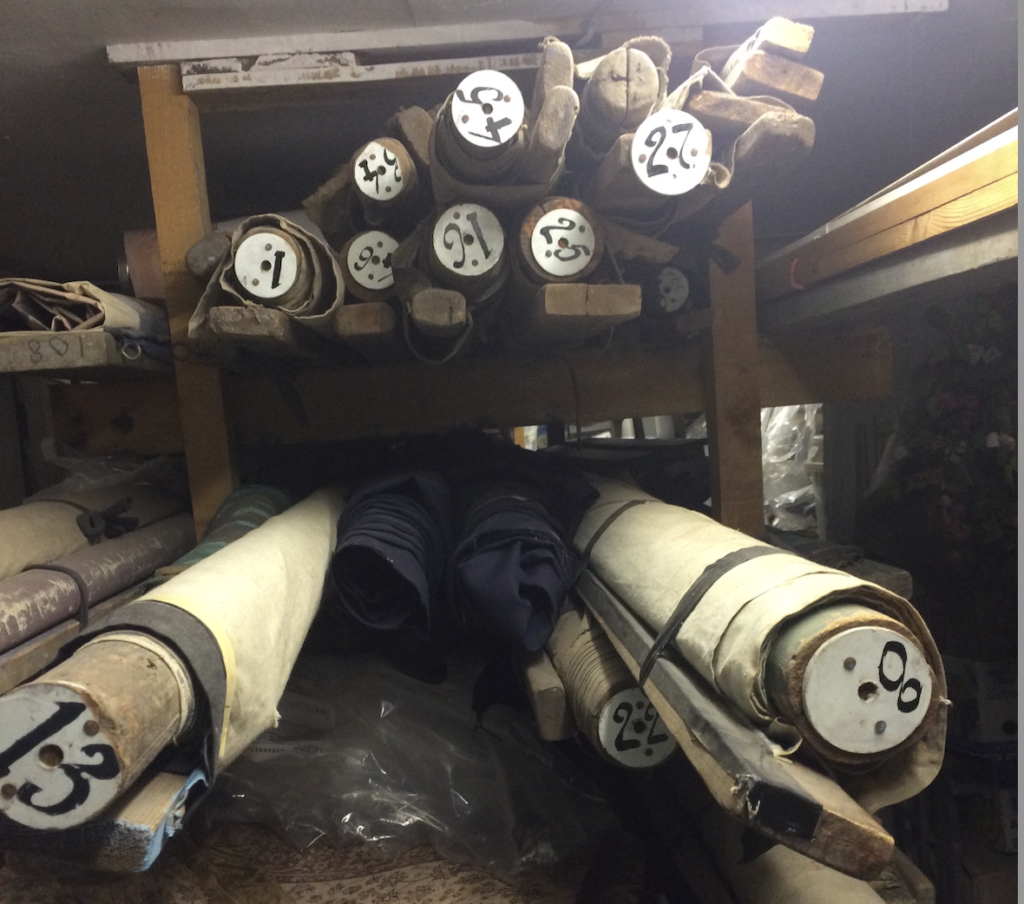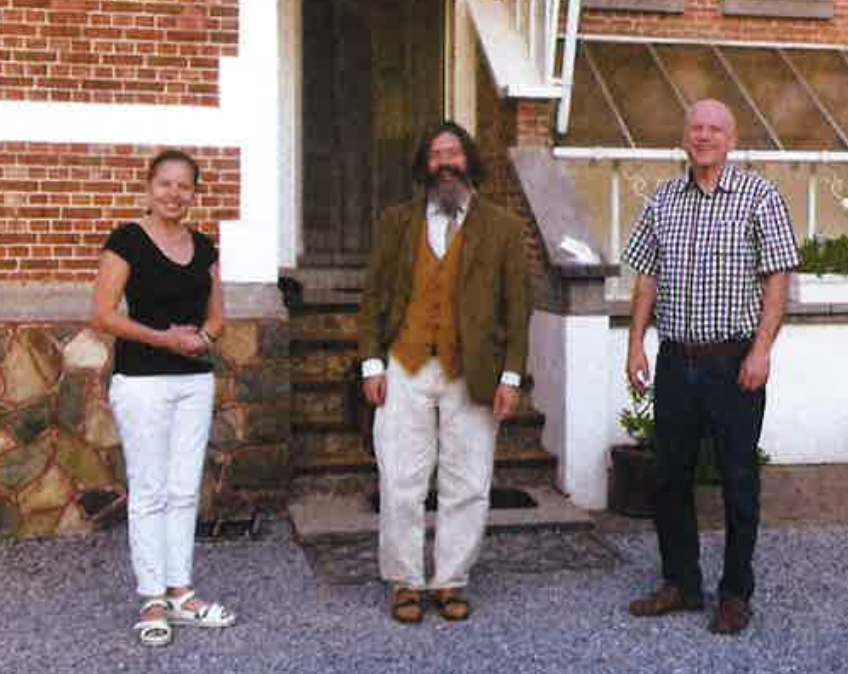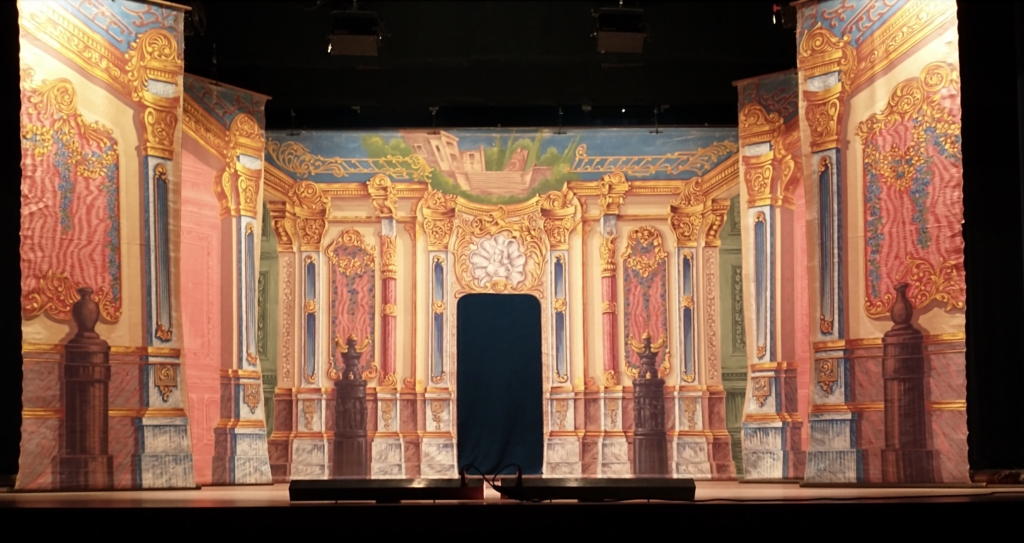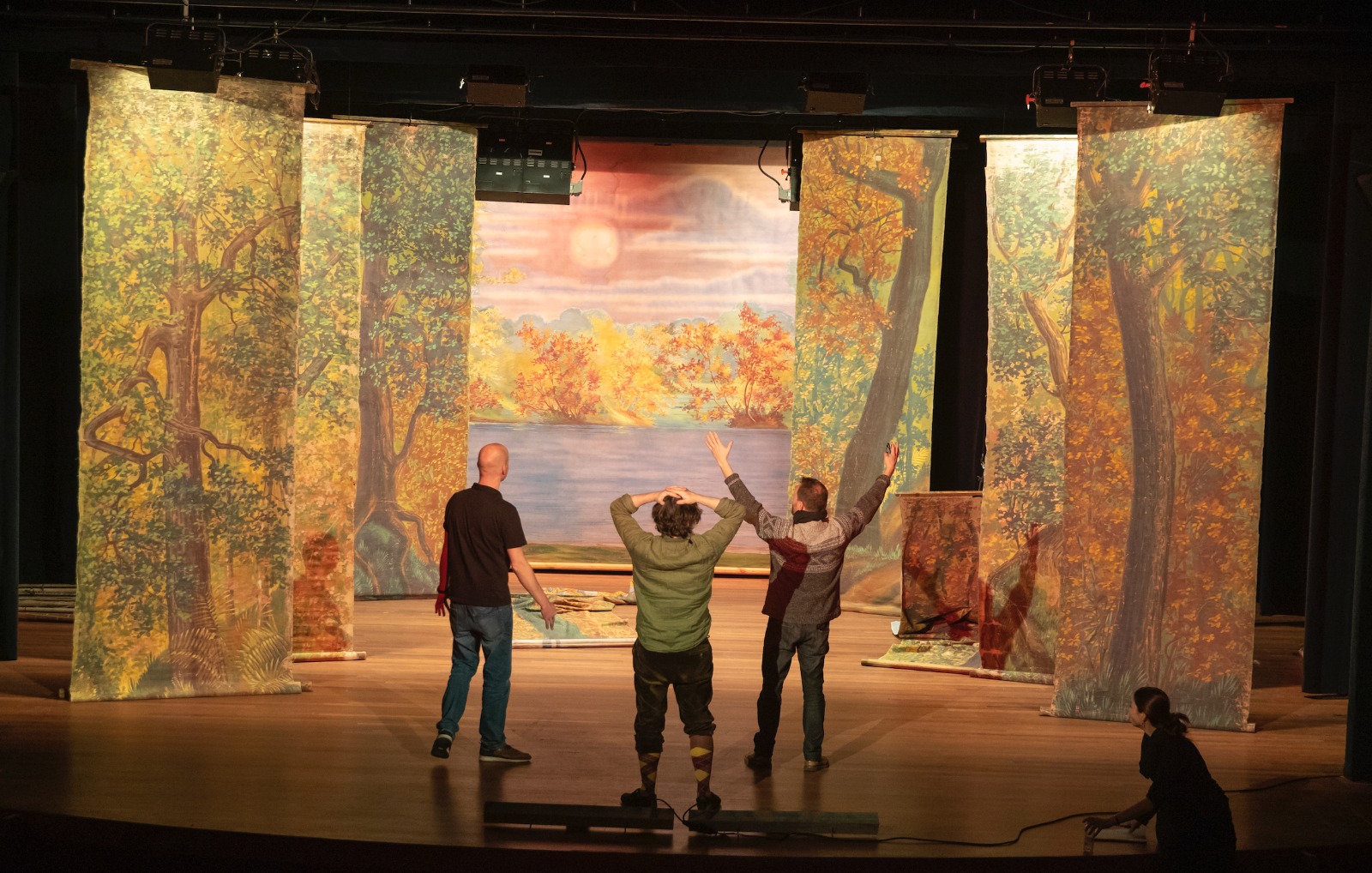The adventure with the Florent Van den Berghe decors continues…perhaps it is worth mentioning how we are working and what our aims are.
Firstly, what are we dealing with?
The collection consists mainly of drops painted on linnen or cotton, and attached top and bottom to wooden battens. These battens are labelled with a number, and also marked L or R for stage left or right. One can also usually find the name of the ensemble on the batten, such as Rococo Salon, Bos (Wood), Klooster (Monastery) etc. Most of the drops are painted on both sides, so that one side could belong to the Wood while the other belongs to the Salon.

I purchased the collection from Liliane Deben en Dirk Maes, the owners of the Josée Nicolas Ballet School in Beringen, Belgium. They had purchased the collection from Florent Van den Berghe in the 1990s. At that time, all of the drops were rolled out on the ballet school’s floor, and photos were taken (on the ground, in daylight). We have these photos to work with as a starting point, and theatre historian Bruno Forment made an excel sheet linking the numbers to the photos and to the names of the ensembles.

So, this week we (Bruno, a crew of enthusiastic volunteers and myself…more on this in a future post) have spread the entire collection – all the drops – all around the backstage area of the beautiful Leidse Schouwburg (Leiden’s municipal theatre). In order to hang an ensemble, we first of all must assemble the drops that we think belong together: a good deal of time is taken up trying to find all the various elements. This is tiresome, dirty work; the drops and battens are heavy, one must constantly kneel down or stoop in order to try to read the fading numbers and names on the battens…often we have to move a drop center stage and roll it out to discover what it actually is. But finally, after much searching, selecting and rejecting of drops, one can start hanging them…but then the question arises: in which order? Which are upstage and which down? Which stage left or right (the L and R on the batten usually – but not always! – makes sense). And how oblique should the drops be in relationship to the proscenium arch? One can imagine that there is a lot of lowering and raising of the drops, as we change the positions, and slide them in and out according to the demands of the perspective.
So what are we trying to achieve?
So, there is much guess work at play and many compromises are being taken here. Remember that we are not trying to make the sets work for a specific performance, but rather we aim to take as many preliminary photos as we possibly can while we have the theatre. Sometimes therefore we are less than perfect with the sight lines, because it is the effect of the decors when seen from the central position that interests us now. Indeed, the stage for which the drops were painted originally was probably less deep than the Leidse Schouwburg stage…all of this more accurate work will be one when we get to use the drops for an actual performance.
And so we use our intuition, trial and error and a good deal of elbow grease…but when we finally get it right, the effect is really wonderful!


